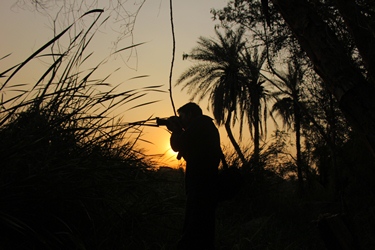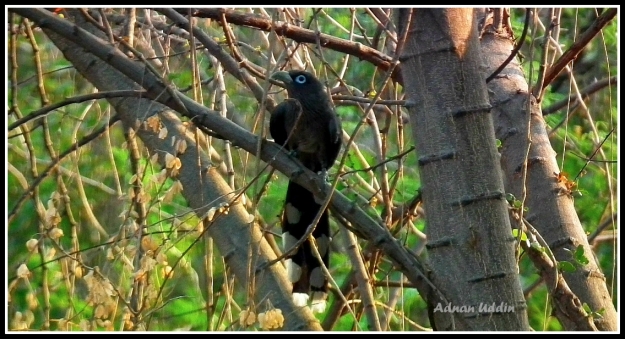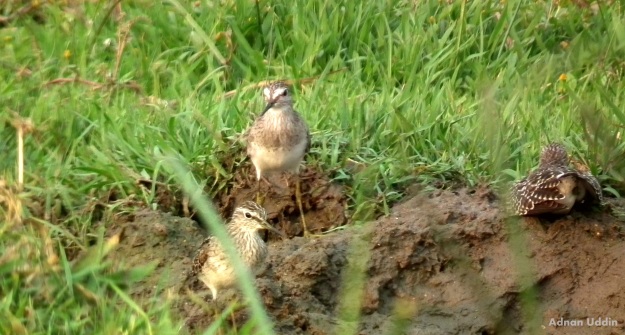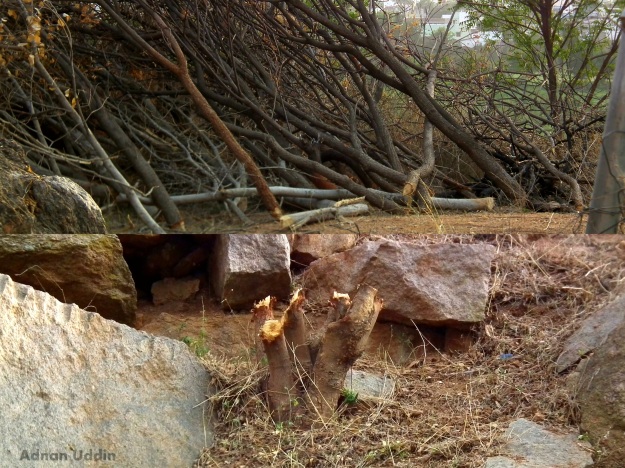How often do we come across a place that boasts of cultural and architectural heritage along with undisturbed wilderness? Naya Qila (or New Fort) in Hyderabad, India is one such a place. It is an extended portion of the famous Golconda Fort. Built by Abdullah Qutb Shah as a defence against the Mughal armies, the place has other structures like Bagh-E-Qutb, an African Baobab tree, Mulla Kahyali and Mustafa Khan mosques, and the Naya Qila talab.
Since I stay very near to this place, I would often frequent it. After I have developed interest in birding, the visits have only increased. The place is an absolute paradise for birdwatchers. My friend Mayank and I have explored a great part of the place and have sighted more than 60 bird species that also include the migratory ones like the Common Sandpiper, Rosy Starling and Ashy Drongo. There are various habitats like scrub jungle, cultivation and marshes that provide home to many flora and fauna.
The place never ceased to thrill us and we were always mesmerised by the sightings of various birds like the Blue-faced Malkoha, Indian Thicknee, Indian Roller, Grey-bellied Cuckoo and Purple Heron etc. If Grey Wagtails descended in hundreds, the migratory Rosy Starlings would come down in thousands. The pleasure of seeing and listening to them was supreme. Their lively twittering would instantly soothe my soul and relieve me of stress. I am sharing some of the pictures of these winged beauties.

Baya Weavers were busy in their nesting activity. The male birds were done with building their nests and the females were inspecting them one by one. (March 2013)
The marshy area near the lake hosted many aquatic birds. Common Sandpipers would always migrate to this place. I have also found the Indian Thicknee near the marsh.
Naya Qila also has the biggest Baobab tree in India. The locals call it, Hathiyan ka Jhad (Elephant Tree). The tree was introduced by the African mercenaries who served in the Abyssinian Royal Guard. It is more than 400 years old. The aura around this tree is mystic.
Interestingly, the government in 2002 wanted to utilise Naya Qila as bird sanctuary. But later it was decided to develop an 18-hole golf course and the license was given to Hyderabad Golf Association (HGA). It was only a matter of time for this wonderful place to be pillaged and destroyed. Ever since HGA started its activities to develop the golf course, the place witnessed destruction.The contours of the heritage precinct were changed, land was ploughed and the lake began disappearing. Floor levels of the tunnel were lowered to provide easy access, the ancient water channel network was badly damaged. Trees were felled indiscriminately. Violations after violations continued to happen.
Land around 50 acres belonging to the local farmers was taken away by the government.The displaced farmers have not been provided proper compensation. Despite protests from various civil society organisations, there has been little change. Hundreds of trucks and earthmovers deployed at the place, continue to ravage and degrade the ecology of Naya Qila. Fire set to the wild growth has charred the birds and animals to death.
Today the entrance of the Naya Qila is fiercely guarded by many security personnel. Although visitor entry is still permitted, one is asked to write his/her name and mobile number in the book provided by the security guard. Many “instructions” and “warnings” are given before one enters the site. Cameras will be confiscated. One can only visit the Baobab tree and not the mosques and other beautiful heritage structures. It would be an understatement to term this as abuse of authority.
At a time when heritage preservation is a growing environmental concern, degradation of Naya Qila’s ecology presents a glaring example of undervaluing our heritage. A place of historical importance has now been reduced to “development”, termed here as “Golf course”. Isn’t it ironic that a haven of birds has now become a place where “birdies” are scored by the golfers? I have recently visited the site after a year. The peacocks, the starlings, the orioles, the nightjars, all have disappeared. The open forest is “missing” and the water resource has been destroyed. Environmental values and ethics have been damned. In totality, a paradise has been lost.






